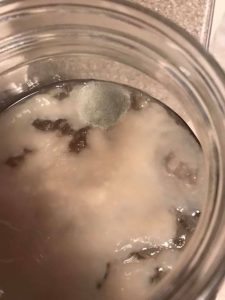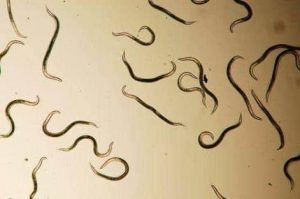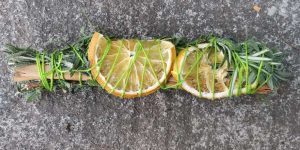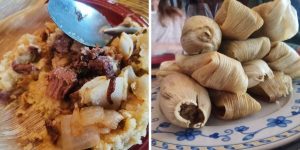The biggest concern most people have as a new brewer is whether or not they’ll recognize if something is wrong with their kombucha recipe. We hear horror stories of people having died from contamination in one regard or another and that’s enough to scare anyone off from brewing. In reality, it’s not that hard to notice issues and there are only a few ways you can really harm yourself with kombucha. It’s much more rewarding to brew your own slightly sweet brew than one to drink one that’s already nearly vinegar from the store. Today’s post will cover the most common things that can go wrong in brewing, as well as how to avoid them.
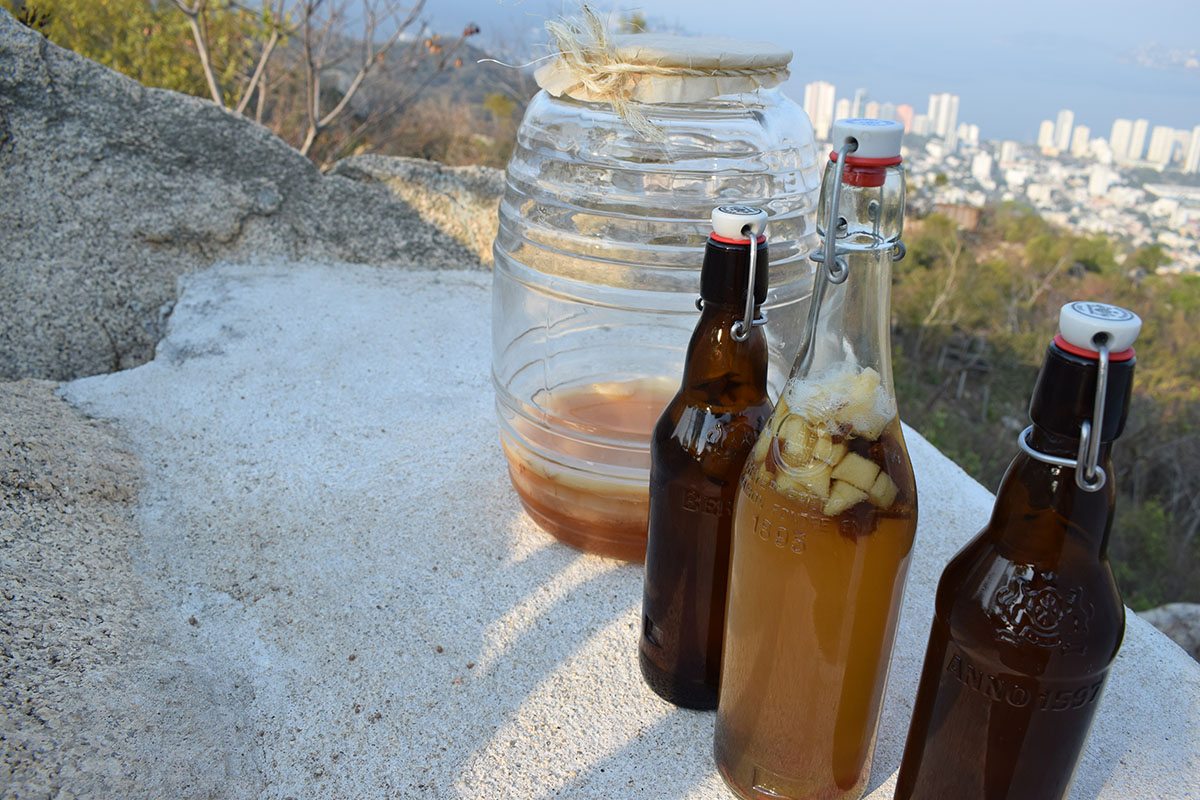
1) “My kombucha tastes like vinegar”: This is simply done by over-brewing, which is a common thing for new people. Just use that vinegar to start a new brew and use it around the house. Kombucha vinegar can be used just like apple cider in just about all applications!
2) “There’s white or grey fuzzy stuff on my scoby!”: This is mold that has contaminated your brew. It’s a lost cause, throw it out and get a new starter. While the top layer may APPEAR to be the only affected layer, this is not the case, the spores are suspended throughout the kombucha. This can cause serious health issues, so don’t even risk it if you’ve got mold.
3) “There’s worms in my brew”: You’ve got Kombucha eels, or rather vinegar eels. These can only come if your brew has come in direct contact with apple cider. Some use vinegar to clean their containers, and if you do and leave some left this could pose an issue. Some people straight clean their scoby-ies with it, which is unneccesary. Best plan is to keep it away from your kombucha.
 Get 1 X Organic Kombucha Scoby – Live Culture here on Amazon!
Get 1 X Organic Kombucha Scoby – Live Culture here on Amazon!
4) “There are fruit flies in my brew”: You need to have your brew covered, but not completely. Air needs to be able to travel but not bugs. I just use a coffee filter myself, with good results. Cheesecloth is NOT a good option as bugs can still climb through the holes no matter how many layers you put.
5) “My scoby fell apart”: Teas like Earl Grey or teas high in oils can cause your scoby to break down and degrade, possibly even mold. Try to keep things high in oils out, so if your herbal tea has citrus peel set it aside.
6) “My brew never got going”: From my understanding, it’s common practice for many people (including scoby distributers) to give away refrigerated scoby starter kits. From my understanding this can make the bacteria and yeast go TOO dormant, which can make it so they never wake back up. This often leads to mold.
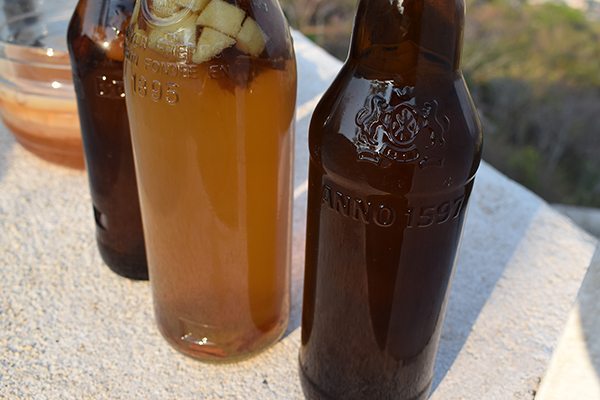 And now time for a list of things to consider when brewing kombucha. If you pay these things some mind, you’ll have successful brews from the start.
And now time for a list of things to consider when brewing kombucha. If you pay these things some mind, you’ll have successful brews from the start.
Temperature: Temperature is really important. Kombucha apparently brews best at about 85 degrees fahrenheit. If your house is too cold, mold will come and ruin the brew. Many people use heating mats and even christmas lights to heat their brews during cold seasons.
Water: What water you use is important. If it has lots of chlorine in it for example, that’ll kill your brew. We just use the filtered drinking water we can buy down here, although it’s not totally necessary. Many people use tap water where their location permits, just be aware of what’s in the water you brew with.
Tea: Tea is important for many reasons, not just flavor. Teas like Earl Grey or herbal teas are high in oil and can cause your scoby to break down or your brew to mold. Many debate that you need a tea high in caffine but this is a myth, the kombucha does not eat the caffine. If anything, you need a tea with a decent amount if tannins. Black, Green and Hibiscus are all really common favorites. I currently just brew black and green.
Sugar: Sugar is necessary for the process but the type can vary to an extent. From my understanding conventional kombucha doesn’t really like honey, wheras a jun kombucha scoby thrives off of it. Most regular kombucha likes plain sugar, brown sugar or something similar to that. I’ve used piloncillo, which is unrefined sugar. My only complaint with using brown is that it has a much more beery taste to it.
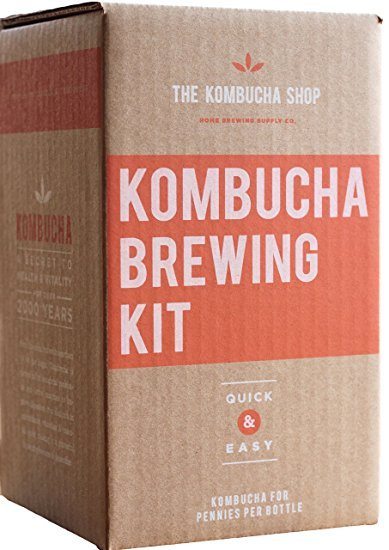 Get a Kombucha Brewing Kit with Organic Kombucha Scoby on Amazon!
Get a Kombucha Brewing Kit with Organic Kombucha Scoby on Amazon!
Vessels: What you brew in is also imporant. Never plastic, metal or unglazed ceramic as unwanted things can leach in and out of your booch. Size and shape can be important too. The more surface area, the faster the brew! That’s partially why my big jar takes so little time. Go for glass, glass with a plastic spicet is ok too.
Cleanliness: Keeping it clean is the secret to success and keeping your brew from contamination. Thoroughly wash and rinse everything that comes into contact with your brew and you’ll do fine. There are debates on the best way to go about it. Just do what you feel comfortable with, just keep it clean.
Location: Where you put it is important, for best brewing. Light isn’t bad but it does seem to brew much faster in darkness. Keeping it out of direct sunlight is most important.
Bottles: If you plan to do a second ferment for flavor and fizz, pay attention to what bottles you use. Any glass bottles that previously held carbonated beverages are good starter bottles. There are all sorts of options on amazon for the more serious hobbyist. I have my english friend buy fancy beer and give me his flip top bottles. I get the label off and wash them well and I’ve had great success so far!
Flavors: Flavors are awesome, but how you do it is important. If you’re fermenting again, avoid oily things like citrus peels or essential oils. From what I can tell, kombucha and essential oils don’t really jive well, even added at the end. Added early on is just asking for mold.
Apple Cider Vinegar: There are a LOT of sources out there that will tell you to make this stuff an essential part of your brewing process. In reality, this is not a good idea. Some advise you add some to your brew to aid in the brewing process. When you do this, you are no longer brewing kombucha but a hybrid. And often you are adding contaminants like vinegar eels as raw vinegar is notorious for containing them. You do not need to wash your scoby or your vessels with it at any point. It is best to keep these things separate.
So there is a lot to consider when brewing but it all makes sense and fits together. Now that I am aware of these things, I have no trouble remembering them all. Even though I’m only a new person myself, I can almost always correctly diagnose an issue someone is posting about in one of the groups on Facebook.
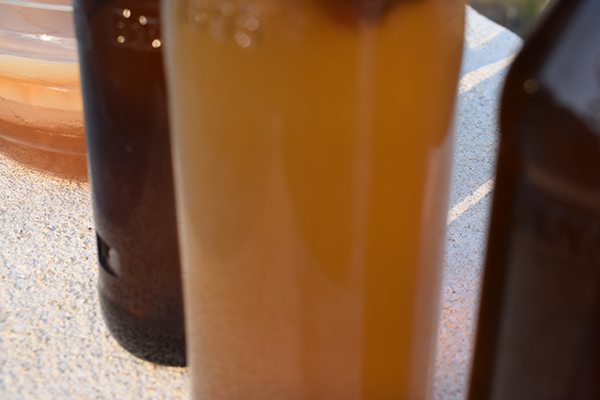
The nice thing is the serious stuff to our health, mold contamination, is seriously really easy to see. People that continue with a contaminated mother risk serious health effects, which is why it’s best to just throw it out. Chances are someone, somewhere out there is more than willing to send you a kombucha care package.
So thanks for reading and supporting us, until next time, Happy brewing!
Click here to check out the 8th and final part of the 8 part series! By the end of part 8, you will have the knowledge you need to start your own Kombucha brewing project!
If you interested for more like this and following our story, head over to our Steemit!

